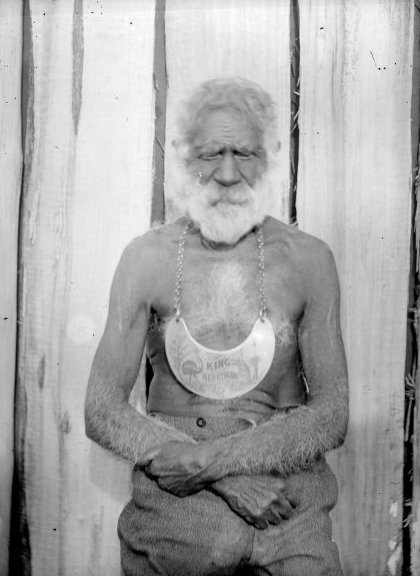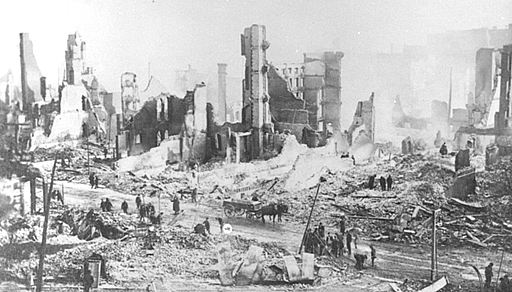|
Umbarra
Umbarra, or King Merriman (died 1904) was an Aboriginal elder, elder of the Djirringanj/Yuin people of the Bermagui, New South Wales, Bermagui area on what has become called the Sapphire Coast since European Colonial settlement of far-southern New South Wales coastal area. Although Aboriginal Australian, Aboriginal people traditionally did not have kings or chiefs, only elders, the colonialism, colonial powers used to often grant king plates to certain elders, hence the moniker "King". Life Umbarra lived on Merriman Island, in the middle of Wallaga Lake, while his people lived on the shores of the lake. Umbarra was believed to have clairvoyant abilities, and communicated with a Pacific black duck, black duck, his ''moojingarl'' or Yuin#Kinship with the natural world, being with which he had a spiritual connection, which warned him of coming danger. Umbarra provided information on the Yuin to Alfred William Howitt for Howitt's 1904 book ''The native tribes of South-East Austral ... [...More Info...] [...Related Items...] OR: [Wikipedia] [Google] [Baidu] |
Yuin
The Yuin nation, also spelt Djuwin, is a group of Aboriginal Australians, Australian Aboriginal peoples from the South Coast (New South Wales), South Coast of New South Wales. All Yuin people share ancestors who spoke, as their first language, one or more of the Yuin–Kuric languages, Yuin language dialects. Sub-groupings of the Yuin people are made on the basis of language and other cultural features; groups include the Brinja or Bugelli-manji, , Wandandian, Jerrinja, Budawang, Yuin-Monaro, Djiringanj, Walbunja, and more. They have a close association with the Thaua and Dharawal people. Name and identity The ethnonym ''Yuin'' ("man") was selected by early Australian ethnographer, Alfred William Howitt, Alfred Howitt, to denote two distinct Nations of New South Wales, namely the Djiringanj and the Thaua. In Howitt's work, the Yuin were divided into northern (Kurial-Yuin) and southern (Gyangal-Yuin) branches. The term "Yuin" is commonly used by South Coast Aboriginal people to ... [...More Info...] [...Related Items...] OR: [Wikipedia] [Google] [Baidu] |
Merriman Island
Wallaga Lake is an estuarine lake in Bega Valley Shire in New South Wales, Australia, the largest lake in southern NSW. It is located between Bermagui to the south and between Tilba Tilba to the north, situated beneath Mount Gulaga, in the traditional lands of the Yuin people. A large section of its foreshore and catchment are within the Gulaga National Park, since Wallaga Lake National Park, Goura Nature Reserve, and Mt Dromedary Flora Reserve were combined into the larger national park.PDF Text may have been copied from this source, which is available under Attributio ... [...More Info...] [...Related Items...] OR: [Wikipedia] [Google] [Baidu] |
Wallaga Lake
Wallaga Lake is an estuarine lake in Bega Valley Shire in New South Wales, Australia, the largest lake in southern NSW. It is located between Bermagui, New South Wales, Bermagui to the south and between Tilba Tilba to the north, situated beneath Mount Gulaga, in the traditional lands of the Yuin people. A large section of its foreshore and catchment are within the Gulaga National Park, since Wallaga Lake National Park, Goura Nature Reserve, and Mt Dromedary Flora Reserve were combined into the larger national park.PDF Text may have been copied from this source, which is available under [...More Info...] [...Related Items...] OR: [Wikipedia] [Google] [Baidu] |
Wallaga Lake National Park
Wallaga Lake National Park is a former national park in New South Wales, south-west of Sydney and north of Bermagui. It now forms part of a greater Gulaga National Park. In 2001, as part of the Southern Comprehensive Regional Forest Agreement and at the request of Yuin people, Gulaga National Park was created out of the existing Wallaga Lake National Park, Goura Nature Reserve, and Mt Dromedary Flora Reserve.PDF Text may have been copied from this source, which is available under Attribution 4.0 International (CC BY 4.0) licence. (se [...More Info...] [...Related Items...] OR: [Wikipedia] [Google] [Baidu] |
Boomerang
A boomerang () is a thrown tool typically constructed with airfoil sections and designed to spin about an axis perpendicular to the direction of its flight, designed to return to the thrower. The origin of the word is from Australian Aboriginal languages, an Aboriginal Australian language of the Sydney region. Its original meaning, which is preserved in official competitions, refer only to returning objects, not to throwing sticks, which were also used for hunting by various peoples both in Australia and around the world. However, the term "non-returning boomerang" is also in general use. Various forms of boomerang-like designs were traditionally and in some cases are still used by some groups of Aboriginal Australians for hunting. The tools were known by various names in the many Aboriginal languages prior to Colonisation of Australia, colonisation. The oldest surviving Aboriginal boomerang, now held in the South Australian Museum, was found in a peat bog in South Australia, d ... [...More Info...] [...Related Items...] OR: [Wikipedia] [Google] [Baidu] |
Clairvoyants
Clairvoyance (; ) is the claimed ability to acquire information that would be considered impossible to get through scientifically proven sensations, thus classified as extrasensory perception, or "sixth sense". Any person who is claimed to have such ability is said to be a clairvoyant () (). Claims for the existence of paranormal and psychic abilities such as clairvoyance have not been supported by scientific evidence. Carroll, Robert Todd. (2003)"Clairvoyance" Retrieved 2014-04-30. Parapsychology explores this possibility, but the existence of the paranormal is not accepted by the scientific community. The scientific community widely considers parapsychology, including the study of clairvoyance, a pseudoscience. Usage Pertaining to the ability of clear-sightedness, clairvoyance refers to the paranormal ability to see persons and events that are distant in time or space. It can be divided into roughly three classes: precognition, the ability to perceive or predict future eve ... [...More Info...] [...Related Items...] OR: [Wikipedia] [Google] [Baidu] |
Australian Aboriginal Elders
Australian(s) may refer to: Australia * Australia, a country * Australians, citizens of the Commonwealth of Australia ** European Australians ** Anglo-Celtic Australians, Australians descended principally from British colonists ** Aboriginal Australians, indigenous peoples of Australia as identified and defined within Australian law * Australia (continent) ** Indigenous Australians * Australian English, the dialect of the English language spoken in Australia * Australian Aboriginal languages * ''The Australian'', a newspaper * Australiana, things of Australian origins Other uses * Australian (horse), a racehorse * Australian, British Columbia, an unincorporated community in Canada See also * The Australian (other) * Australia (other) * * * Austrian (other) Austrian may refer to: * Austrians, someone from Austria or of Austrian descent ** Someone who is considered an Austrian citizen * Austrian German dialect * Something associated with the countr ... [...More Info...] [...Related Items...] OR: [Wikipedia] [Google] [Baidu] |
1904 Deaths
Events January * January 7 – The distress signal ''CQD'' is established, only to be replaced 2 years later by ''SOS''. * January 8 – The Blackstone Library is dedicated, marking the beginning of the Chicago Public Library system. * January 12 – The Herero Wars in German South West Africa begin. * January 17 – Anton Chekhov's last play, ''The Cherry Orchard'' («Вишнëвый сад», ''Vishnevyi sad''), opens at the Moscow Art Theatre directed by Constantin Stanislavski, 6 month's before the author's death. * January 23 – The Ålesund fire destroys most buildings in the town of Ålesund, Norway, leaving about 10,000 people without shelter. * January 25 – Halford Mackinder presents a paper on "The Geographical Pivot of History" to the Royal Geographical Society of London in which he formulates the Heartland Theory, originating the study of geopolitics. February * February 7 – The Great Baltimore Fire in Baltimore, Maryland, destroys over 1,500 build ... [...More Info...] [...Related Items...] OR: [Wikipedia] [Google] [Baidu] |
Gulaga National Park
Gulaga National Park is a national park on the south coast of New South Wales, Australia, about south of Narooma. The park is dominated by Gulaga, also known as Mount Gulaga (formerly Mount Dromedary). The former Wallaga Lake National Park, Goura Nature Reserve, and Mount Dromedary Flora Reserve were combined to form this park in 2001. The park features the southernmost subtropical rainforest in New South Wales. History Gulaga was an active volcano more than 60 million years ago. In 2001, as part of the Southern Comprehensive Regional Forest Agreement and at the request of Yuin people, Gulaga National Park was created out of the existing Wallaga Lake National Park, Goura Nature Reserve, and Mt Dromedary Flora Reserve. [...More Info...] [...Related Items...] OR: [Wikipedia] [Google] [Baidu] |
Shoalhaven
The City of Shoalhaven is a local government area in the South Coast region of New South Wales, Australia. The area is about south of Sydney. The Princes Highway passes through the area, and the South Coast railway line traverses the northern section, terminating at Bomaderry. At the , the population was 108,531. History Modern-day groupings of the Illawarra and South Coast Aboriginal peoples are based on information compiled by white anthropologists from the late 1870s. Two divisions were initially presented (refer Ridley, 1878), using geographical location and language, though these criteria are now expanded into five divisions and given Aboriginal names, as follows (after C.Sefton, 1983): * Dharawal – general name for the Aboriginal people of the area on the east coast of New South Wales from Botany Bay to Shoalhaven, and west to Berrima and Camden. * Wodiwodi (or Wadi-Wadi) – a subdivision of Thuruwal, includes the Aboriginal people of the coast from Wollongong to ... [...More Info...] [...Related Items...] OR: [Wikipedia] [Google] [Baidu] |





